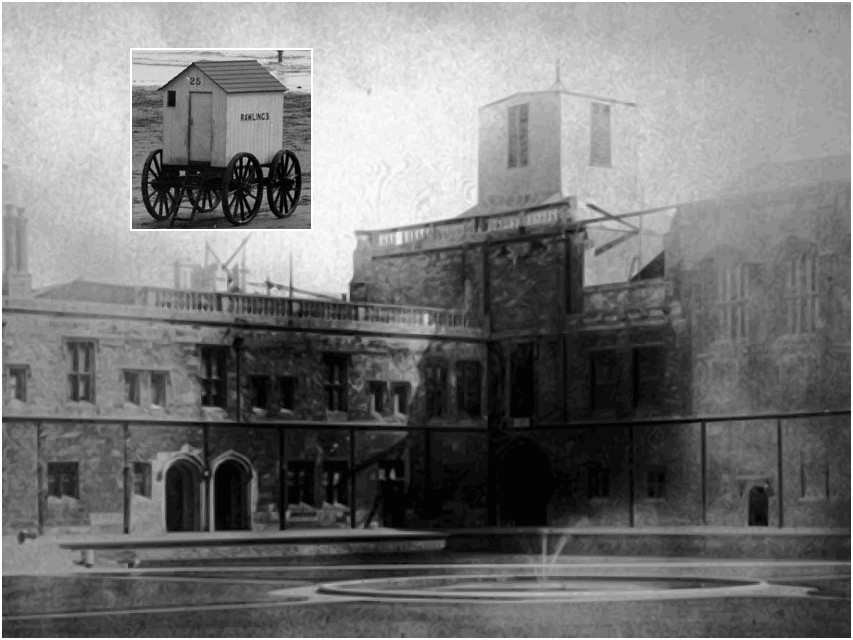The fourth is its fondness for bathing-machines,
Which it constantly carries about,
And believes that they add to the beauty of scenes—
A sentiment open to doubt.

[The New Belfry of Christ Church, Oxford], of the best of Dodgson’s Oxford squibs, a good humored but cutting attack on Dean Liddell (the father of Alice) and the wooden cube built to contain the Cathedral bells during operations to build a new tower. Though it can still be found today behind the stone walls of the tower, the wooden cube was always a temporary plan but Dodgson was impatient and the Governing body were slow.
Source: Cristies, 2009-12-04
The Bell in The Hunting of the Snark might be interpreted as a symbol for time and time pressure. But it also might have been used by C.L. Dodgson to continue lampooning Dean Henry Liddell‘s minimalistic “bonnet-box” project, a meekly geometric belfry to go up on the cathedral at Christ Church. In The New Belfry of Christ Church, a certain “D. C. L.” wrote:
§ 7. On the impetus given to Art in England by the new Belfry, Ch. Ch.
The idea has spread far and wide, and is rapidly pervading all branches of manufacture. Already an enterprising maker of bonnet-boxes is advertising ‘the Belfry pattern’: two builders of bathing-machines[MG025] at Ramsgate have followed his example: one of the great London houses is supplying ‘bar-soap’ cut in the same striking and symmetrical form: and we are credibly informed that Borwick’s Baking Powder and Thorley’s Food for Cattle are now sold in no other shape.
In The Belfry at Christ Church by E.G.W. Bill, edited by Michael Hall and published in Oxoniensia 2013 (Oxfordshire Architectural and Historical Society), I found this quote from a letter by C.L. Dodgson to The Pall Mall Gazette (1874-10-31):
During the restoration of the Cathedral, when the bells had been removed from the tower, which had become too weak to support them, it was proposed to hang them outside the cathedral in a wooden belfry, which we were assured would be quite inoffensive, as it would hardly be visible from any point of the compass. In an evil hour we consented, and the resulting erection, which cost about a thousand pounds, speedily made us famous for having inflicted upon Oxford the ugliest and most conspicuous monstrosity that probably she has ever seen. This, and the great expense already incurred, forced on us the conviction that we must now erect a stone bell-tower.
2018-05-24, update: 2022-11-22



